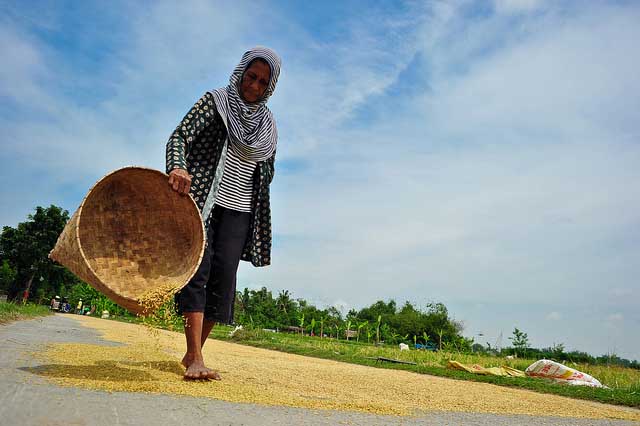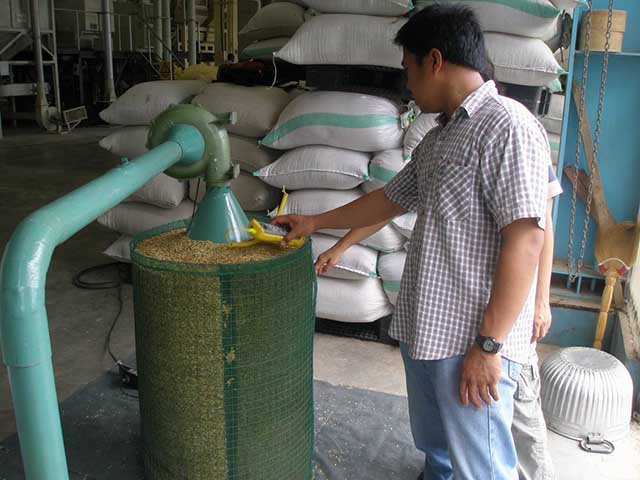Drying systems
Drying can be done using either traditional or mechanical drying systems that have varying technological complexity and capacities for either farm or commercial level.
Traditional drying systems
Traditional drying systems are still practiced in many areas because of its low cost and ease of management. These include methods, such as:
- Sun drying - spreading grains under the sun, on mats and pavements
- Mat drying - used in small to medium-scale drying where threshed grain are placed on mats, nets, or canvas
- Pavement drying - often used in large-scale drying for grain collectors and millers, where grains are laid on pavements specifically made for drying
- Field drying and stacking - a method for pre-drying hand-harvested crops before threshing where farmers cut rice panicles in the field and stacked them in small piles on top of the crop stubble
Although field drying and stacking is still practiced in some areas, it is not recommended because it can lead to high losses when grains become overdried and shattered.
Mechanical drying systems
In this system, mechanical dryers are used to remove water from wet grains by forcing either ambient air or heated air through the grain bulk. This is done through:
- Heated air drying - employs high temperatures for rapid drying. The drying process is terminated when the desired final moisture content is reached. It uses the following types of dryer:
- Batch dryer - can be used by farmers, contractors, and small rice mills
- Re-circulating batch dryer - can be used by commercial rice mills and cooperatives
- Continuous flow dryer - not very common, but used by some larger billing enterprises that handle large volumes of wet paddy
- Low-temperature drying or in-store drying - controls the relative humidity rather than the temperature of the drying air so that all grain layers in the deep bed reach equilibrium moisture content. This can be done using the
- In/store dryer - produces very high quality grains but requires long drying time, i.e., four days to two weeks
Read: Heated air drying versus low-temperature drying
- Solar drying - latest drying technology that is able to simulate sun drying even during rainy conditions. This is done through:
- Solar bubble dryer - can be locally-built and used by smallholder farmers
- Grain cooling - cools the grain to safe storage conditions instead of drying it, allowing grains to be conserved for longer periods
Fact sheet: Paddy drying systems


